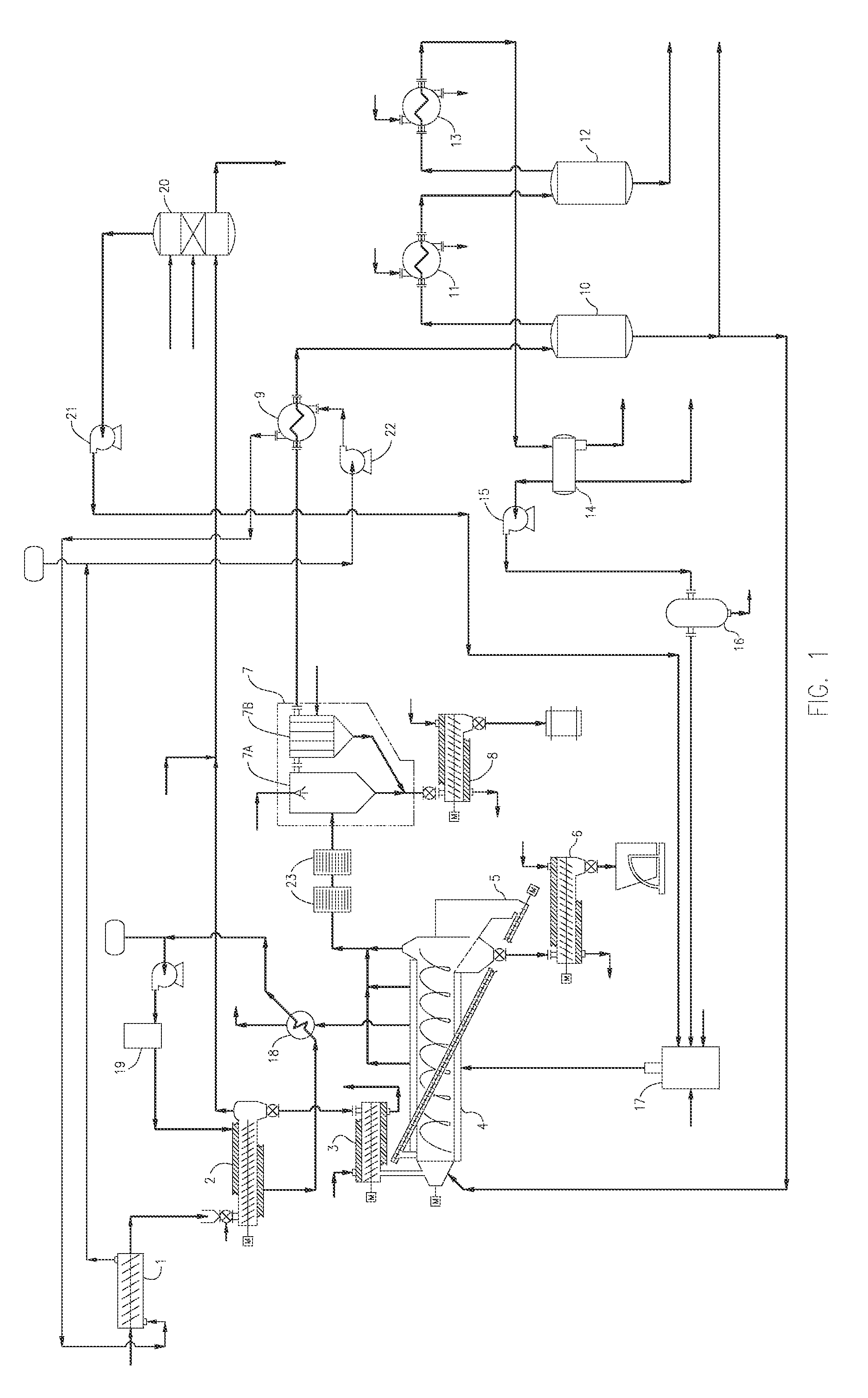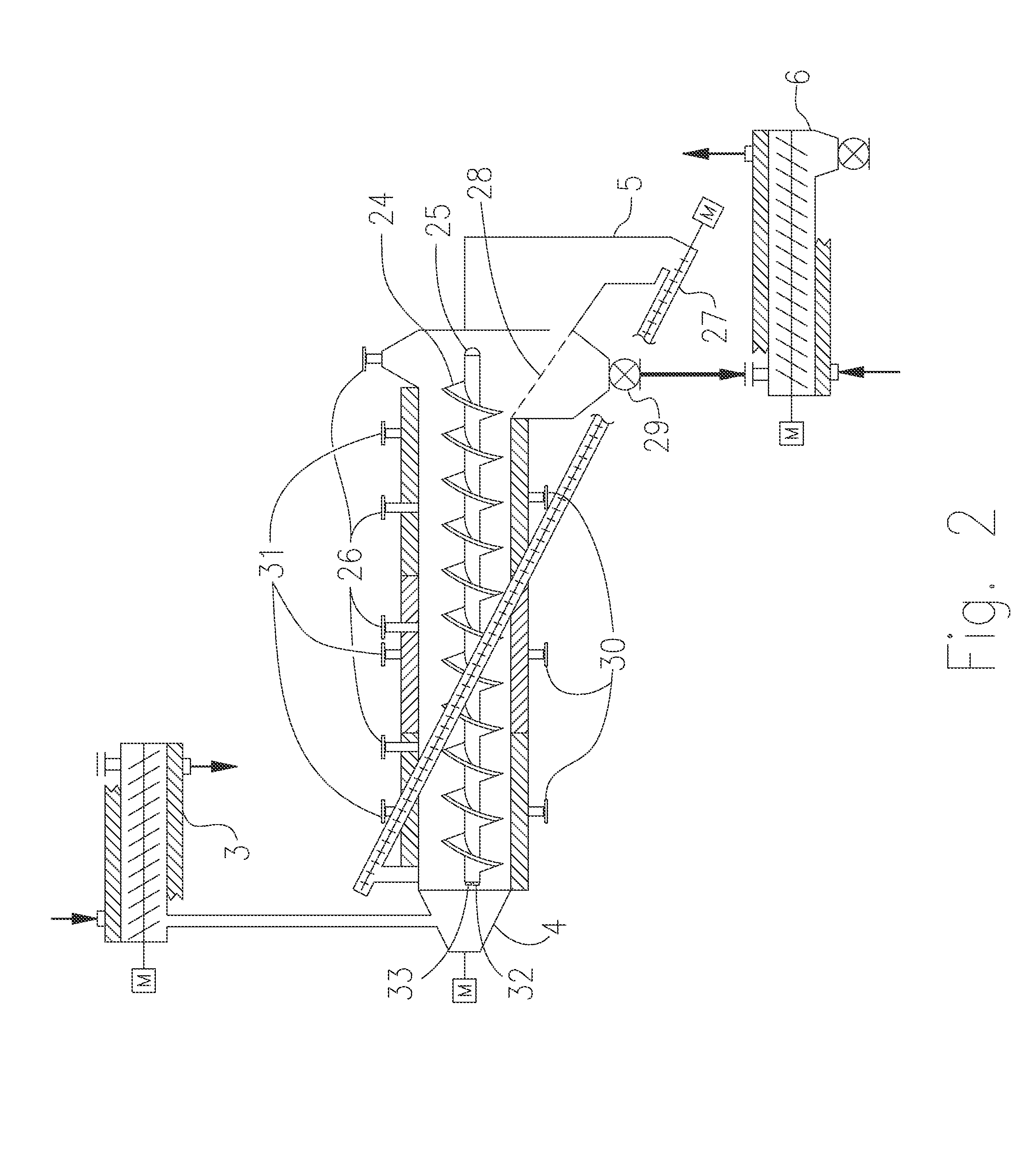Process and Apparatus for producing Hydrocarbon Fuel from Waste Plastic
a technology of hydrocarbon fuel and process equipment, which is applied in the direction of lighting and heating equipment, indirect heat exchangers, organic chemistry, etc., can solve the problems of high operating cost, high capital investment and high operating cost of the 2-step cracking process, and the inherent catalyst deactivation over time by coke formation, so as to prevent coke build-up, increase yield, and high quality
- Summary
- Abstract
- Description
- Claims
- Application Information
AI Technical Summary
Benefits of technology
Problems solved by technology
Method used
Image
Examples
example 1
[0060]A simulation of the process using a commercial plant design was performed based on the process shown in FIG. 1 and the pyrolysis reactor 4 as shown in FIG. 2. The thermal decomposition process and reactor 2 are designed to continuously process 25 tons per 24 hours of waste plastic or 2296 lb / hr mixed plastic feedstock. The composition of the plastic feedstock is 45 wt % LDPE, 49 wt % PP, 2 wt % HDPE, and 0.25 wt % PS, 0.35 wt % PVC, 0.1% PET, and 3 wt % other plastics, as outlined in Table 1.
TABLE 1Hydrocarbon Product and Recycled Streams produced in thermaldecomposition calculated for a typical waste plastic feedstockWastePlasticFeedFeed StreamFeedstockComposition %lb / hrPP491132LDPE451033HDPE246PET0.12PVC0.358PS0.256other369
[0061]The pyrolysis reactor 4 is 25 feet long and has a diameter of 2.5 feet. The mixed waste plastic has a moisture content of about 10% by weight. The waste plastic is shredded into pieces of about 2 inches by 2 inches and fed into a dryer and heated to ...
PUM
| Property | Measurement | Unit |
|---|---|---|
| temperature | aaaaa | aaaaa |
| temperature | aaaaa | aaaaa |
| temperature | aaaaa | aaaaa |
Abstract
Description
Claims
Application Information
 Login to View More
Login to View More - R&D
- Intellectual Property
- Life Sciences
- Materials
- Tech Scout
- Unparalleled Data Quality
- Higher Quality Content
- 60% Fewer Hallucinations
Browse by: Latest US Patents, China's latest patents, Technical Efficacy Thesaurus, Application Domain, Technology Topic, Popular Technical Reports.
© 2025 PatSnap. All rights reserved.Legal|Privacy policy|Modern Slavery Act Transparency Statement|Sitemap|About US| Contact US: help@patsnap.com



